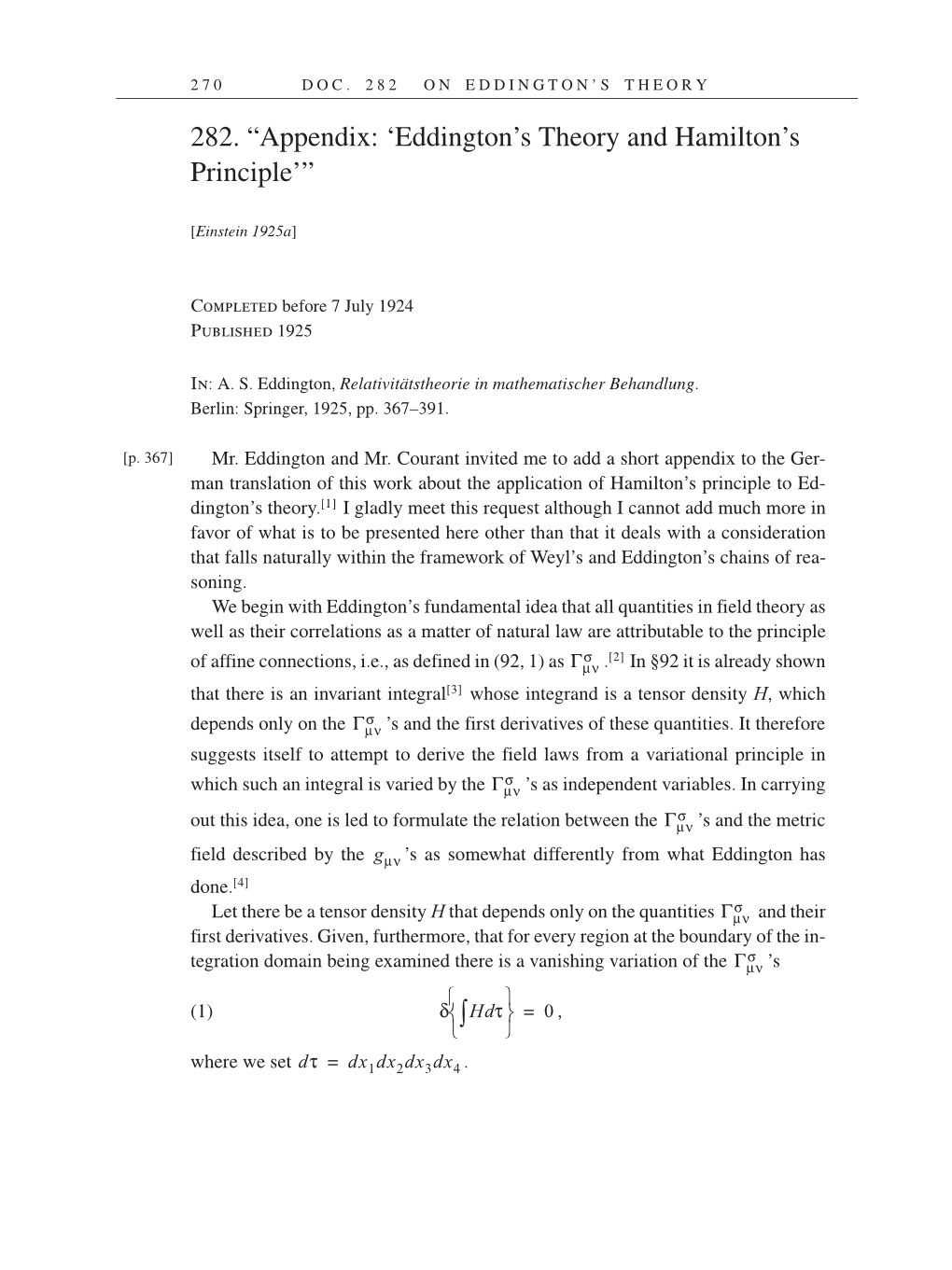2 7 0 D O C . 2 8 2 O N E D D I N G T O N ’ S T H E O R Y
282. “Appendix: ‘Eddington’s Theory and Hamilton’s
Principle’”
[Einstein 1925a]
Completed before 7 July 1924
Published 1925
In: A. S. Eddington, Relativitätstheorie in mathematischer Behandlung.
Berlin: Springer, 1925, pp. 367–391.
Mr. Eddington and Mr. Courant invited me to add a short appendix to the Ger-
man translation of this work about the application of Hamilton’s principle to Ed-
dington’s
theory.[1]
I gladly meet this request although I cannot add much more in
favor of what is to be presented here other than that it deals with a consideration
that falls naturally within the framework of Weyl’s and Eddington’s chains of rea-
soning.
We begin with Eddington’s fundamental idea that all quantities in field theory as
well as their correlations as a matter of natural law are attributable to the principle
of affine connections, i.e., as defined in (92, 1) as
.[2]
In §92 it is already shown
that there is an invariant integral[3] whose integrand is a tensor density H, which
depends only on the ’s and the first derivatives of these quantities. It therefore
suggests itself to attempt to derive the field laws from a variational principle in
which such an integral is varied by the ’s as independent variables. In carrying
out this idea, one is led to formulate the relation between the ’s and the metric
field described by the ’s as somewhat differently from what Eddington has
done.[4]
Let there be a tensor density H that depends only on the quantities and their
first derivatives. Given, furthermore, that for every region at the boundary of the in-
tegration domain being examined there is a vanishing variation of the ’s
(1) ,
where we set .
[p. 367]
Γμν
σ
Γμν σ
Γμν σ
Γμν σ
gμν
Γμν
σ
Γμν
σ
³Hdτ
¯ ¿
¾
½
δ® 0 =
dτ dx1dx2dx3dx4 =
